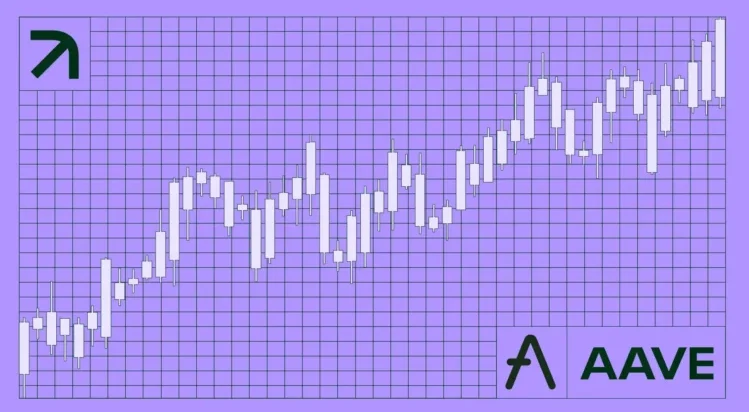On May 19, 2025, the Aave team announced the official deployment of Aave V3 on the Aptos blockchain. It celebrated a record Total Value Locked (TVL) milestone, sending our native governance token, AAVE, to a multi-month high. The recent cross-chain extension and exceptional liquidity surge have revived distributed finance, showcasing Aave’s protocol architecture and on-chain capital flows. In 2025, AAVE is one of the top-performing DeFi assets due to crypto ecosystem themes of interoperability, yield production, and risk-adjust returns.
Aave V3 Launches on Aptos
Aave’s choice to run V3 on Aptos marks a turning point in the protocol. Aave’s governance forum started the ARFC (Aave Request for Comments) process on April 16, 2025, to create Aptos Mainnet technical standards and risk guidelines.
This solution uses Aptos’ Move-based architecture, ultra-low costs, and rapid throughput to solve popular lending systems’ scaling difficulties. Aave tokenholders authorised Aave V3’s debut on non-EVM rails on May 5, 2025, benefiting borrowers and liquidity providers.
Aave Soars with Aptos Expansion
Aptos’ consensus and Move programming model give stable gas pricing and fast transaction speeds, which helps improve Aave’s user experience. Cross-chain interactions become crucial as DeFi governance tokens like AAVE fight for mindshare. Growing Aptos developer base. The rise of APAC users gives Aave’s lending pools a new platform to link communities and effect beyond Ethereum.

Concurrent with its cross-chain project, Aave recorded an all-time high TVL, exceeding $40 billion by May 12, 2025. TVL rose from 6 million to 10 million ETH, showing large deposit inflows and positive yield-seeking behaviour among DeFi users. Large-scale On-chain analytics showed whale donations of hundreds of ETH in single transactions. Therefore, ETH investors supported Aave V3’s smart-contract security and interest-rate algorithms.
Aave TVL Soars on V3
Besides ETH’s recent price surge (from $1,500 to $2,500 over 30 days), among Aave’s stablecoins (USDC, USDT, and GHO), the record TVL displays collateral. Using novel assets, including sUSDe, is expanding across numerous blockchains. The protocol’s modular V3 design enables enhancements to capital efficiency, including effective gas optimisation and isolation mode. It attracts liquidity miners, purchasers, and institutional yield aggregators.
AAVE Surges on Bullish Signals
Following the Aptos news and TVL milestone, AAVE soared by almost 15% over 24 hours, cutting resistance at its 0.5% Fib retracing close to $178 before hitting the next hurdle at $220. Weekly candlestick patterns expose higher lows consistent with a long-term rising channel first created in Q1, 2025. Technical signals, including the Relative Strength Index (RSI), lingered close to a neutral-bullish area, suggesting an opportunity for upward ascent without quick overextension.
Positive derivatives flows have also helped investor mood; futures open interest is at an all-time high of $569 million. This increase in derivatives activity suggests a rising taste for leveraged exposure to AAVE’s surge and points to continuous liquidity across spot and futures markets.
Aave Highlights DeFi’s Next Phase
The success of Aave shows numerous more general patterns in distributed finance. First, the migration into non-EVM environments such as Aptos highlights the industry’s drive towards actual interoperability. Second, record TVL growth confirms the critical need for strong governance structures: the quick approval procedure of the AaveDAO shows how dispersed decision-making may release strategic expansions free from central constraints. Third, improved risk instruments in V3—such as supply caps, isolation mode, and seasonal markets—show that smart protocol design, able to react to changing market conditions, determines sustained growth.
Future Outlook
Aave is at the junction of danger and opportunity in the future. Continuous cross-chain bridges and Ethereum L2 integrations like Base and zkSync may decentralise liquidity and reduce network dependence. Clearer regulations on the US GENIUS Act controlling stablecoins may help institutionalise DeFi systems employing stablecoin collateral. Risk managers worry about crypto winter, rate hikes, and vulnerabilities (oracle assaults, smart-contract exploitation). As TVL and token use expand, Aave’s Treasury reserves and multi-chain risk provisioning decrease these risks, together with Llama Risk and Chaos Labs audits.


